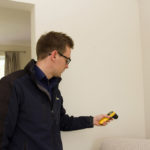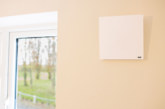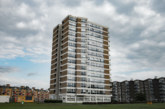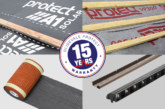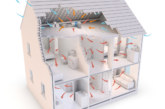EnviroVent looks at the NICE Guidelines, which are currently out for consultation and why the recommendations for local authorities could make a major difference to the health of tenants.
Back in 2016, a report from the Royal College of Physicians and the Royal College of Paediatrics and Child Health, concluded that air pollution both inside and outside the home causes at least 40,000 deaths a year in the UK. The report’s authors estimate that the adverse impact on public health caused by pollution costs the UK economy more than £20bn per year, which is just under 16% of the current annual NHS budget of around £116bn.
The health effect of outdoor air pollution is widely publicised but the report also highlighted the impact of indoor pollution, with evidence of harm to those with existing respiratory conditions, as well as to children’s health and intelligence.

Sources of indoor air pollution include smoking, faulty boilers, gas cookers and heaters, as well as chemicals from new furniture, air fresheners and household cleaning products, which emit Volatile Organic Compounds (VOCs). Household dust mites, mould and dander from pets can also have a negative impact on health, according to the report.
Indoor air pollution is estimated in the report to have caused or contributed to 99,000 deaths across Europe in 2012. Dr Andrew Goddard, at the Royal College of Physicians, at the time the report was released, said: “Taking action to tackle air pollution in the UK will reduce the pain and suffering for many people with long term chronic health conditions, not to mention lessening the long-term demands on our NHS.”
Poor indoor air quality arises for a number of reasons, but the most fundamental is poor quality housing. Since the release of the report by the Royal College of Physicians and the Royal College of Paediatrics and Child Health, the issue of indoor air quality has been taken much more seriously.
Draft guidelines
Recently NICE (National Institute of Health & Care) issued draft guidelines, which are currently under consultation and due to be released in December. This contains advice and guidance for specifiers, builders/contractors, local authorities and householders in order to improve indoor air quality.
Firstly, the guidance for local authorities is to use existing regulatory powers to reduce people’s exposure to pollutants in their homes by ensuring problems such as damp and mould are fixed promptly and that they are aware of which household products emit hazardous chemicals.
The link between asthma and poor indoor air quality is quite clearly made in the guidance. It highlights how modern, energy-efficient homes have become like sealed boxes, trapping moisture and poor quality air, especially where there is a lack of adequate ventilation. The NICE guidelines emphasise the need for a balanced approach to ventilation, insulation and heating to ensure good indoor air quality throughout a property.
The guidelines look at how tenants suffer ill health as a result of exposure to poor indoor air quality. This particularly includes people with a pre-existing health condition such as asthma, allergies and cardiovascular disease; as well as pregnant women, older people, those living in poor quality housing or people who may have increased exposure to poor air quality at home.
Joined-up approach
Local authority departments and health and social care providers will be required to collaborate in order to improve air quality in people’s homes. The guidance recommends a joined-up approach so that if a health professional is aware of a tenant suffering a condition related to indoor air quality, such as asthma or respiratory problems, then they liaise with local authorities to recommend a housing assessment to check indoor air quality.
It may be the case that extra training is needed to identify problems with indoor air quality and to give advice on how to prevent or resolve such problems. Incorporating this training into existing continuous professional development could help to minimise costs.
The guidelines recommend that local authorities use existing professional development systems to ensure local authority staff and housing/healthcare professions, have the skills to give general advice to occupants on how to avoid activities that increase the level of indoor air pollutants.
The guidance to people is clear on how to reduce damp and condensation.
This includes:
- using background ventilation (such as trickle vents, or whole-house mechanical ventilation systems)
- using mechanical ventilation systems (such as extractor fans), and opening windows where possible and safe
- avoiding moisture-producing activities (such as air-drying clothes) indoors if possible or improving ventilation if these cannot be avoided
- repairing sources of water damage and ensuring that residual moisture is removed.
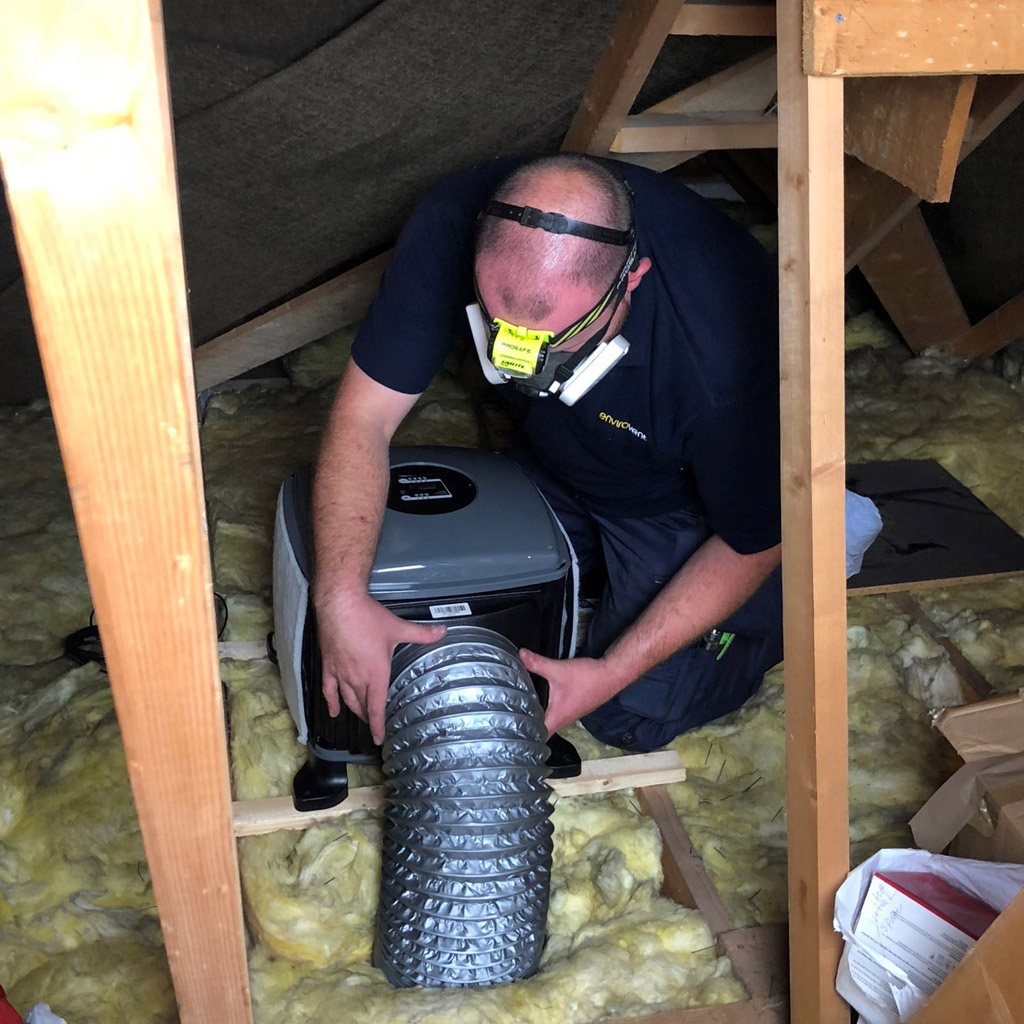
Clean Air Strategy
As furniture and flooring are often high carriers of Volatile Organic Compounds (VOCs) the guidelines recommend that local authorities advise people to purchase low emission materials, which will have less impact on air quality. The proposed guidelines back up the Government’s Clean Air Strategy 2019, which outlines how the government and local authorities need to raise awareness of poor indoor air quality.
If improvements are made in indoor air quality then this should have a direct impact on health outcomes. The results would be major savings for the NHS in terms of fewer visits to hospital and GPs. For local authority landlords this would also mean improved tenant satisfaction, less pressure on maintenance departments and a reduction in the time that properties are left vacant.
Mould is an issue that affects homes of all sizes and build types during the colder months and the main cause of mould growth is clearly down to poor ventilation. PIV (Positive Input Ventilation) systems like ATMOS are very effective when installed in existing homes with condensation and mould issues. They gently ventilate the home from a central position on a landing from within your loft and will transform a stagnant and stale atmosphere into a fresh, healthy and condensation-free environment.
Every home is different. That is why we strongly recommend arranging a free survey to ensure that the correct ventilation system is installed in each property.
Some landlords have taken this advice and are already moving from a reactive response to poor indoor air quality to a more proactive and preventative approach to improving ventilation across their housing stock. Retrofitting ventilation systems is undoubtedly having an impact on indoor air quality and improving tenant health.
Header image shows a contractor carrying out air testing in a home.

